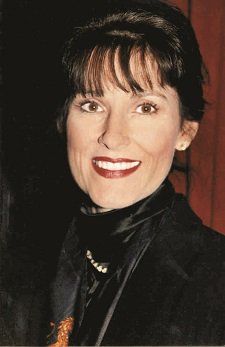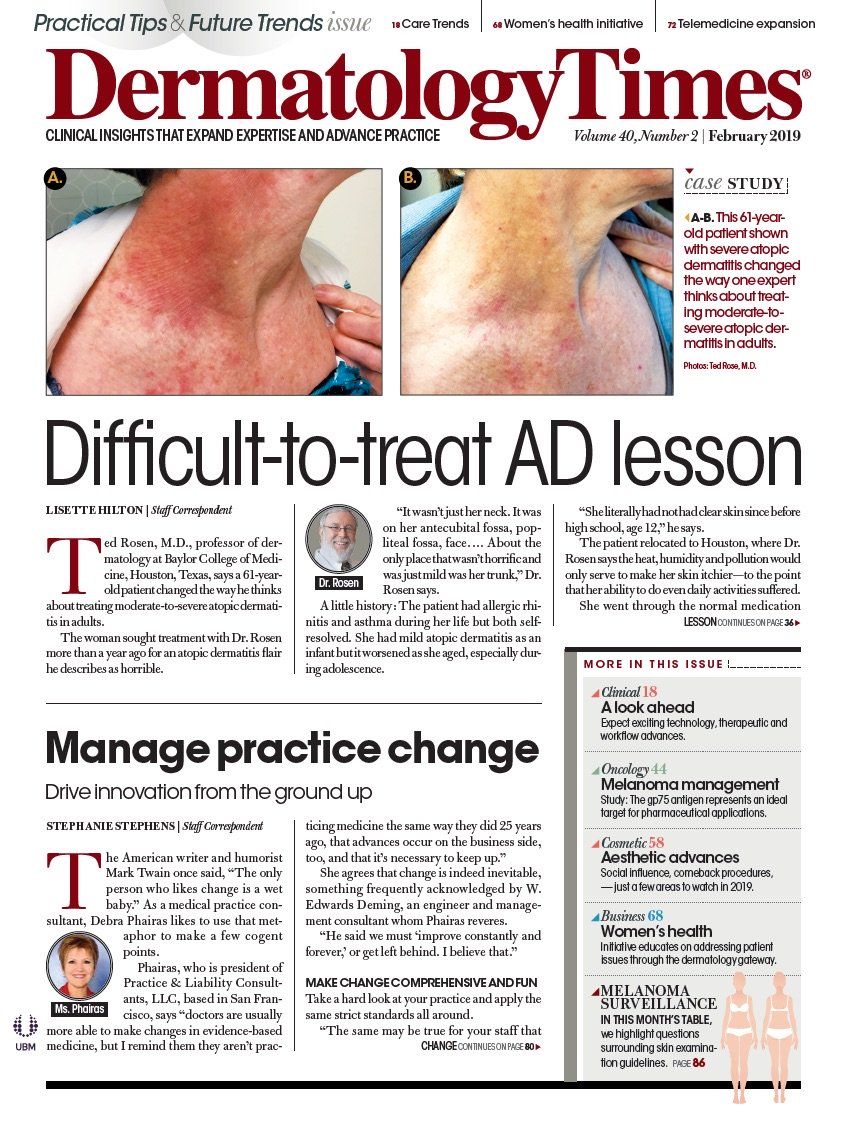- Case-Based Roundtable
- General Dermatology
- Eczema
- Chronic Hand Eczema
- Alopecia
- Aesthetics
- Vitiligo
- COVID-19
- Actinic Keratosis
- Precision Medicine and Biologics
- Rare Disease
- Wound Care
- Rosacea
- Psoriasis
- Psoriatic Arthritis
- Atopic Dermatitis
- Melasma
- NP and PA
- Skin Cancer
- Hidradenitis Suppurativa
- Drug Watch
- Pigmentary Disorders
- Acne
- Pediatric Dermatology
- Practice Management
- Prurigo Nodularis
- Buy-and-Bill
Publication
Article
Dermatology Times
How to treat hair hang-ups
Author(s):
In this month's Cosmetic Conundrums, Dr. Zoe Diana Draelos answers questions on hair care, including treatments for dandruff, seborrheic dermatitis and oily hair.
What can be done for dandruff and seborrheic dermatitis from a cosmetic standpoint? (artem_goncharov - stock.adobe.com)

Dr. Draelos is a consulting professor of dermatology, Duke University School of Medicine, Durham, N.C.

Q. What can be done for dandruff and seborrheic dermatitis from a cosmetic standpoint?
Oral and topical antifungals, along with topical corticosteroids, are the mainstay of prescription treatment for seborrheic dermatitis. However, once the severe scaling and itching has been controlled and the condition downgraded to dandruff, there still remains the need to prevent recurrence and control scaling. OTC products can be used for these purposes.
One way to prevent the recurrence of scalp dryness is to rub a normal hair instant conditioner into the scalp after shampooing, followed by rinsing. Conditioners can function as scalp moisturizers without leaving the scalp greasy, since they are rinsed minutes after application.
There are also many excellent anti-dandruff shampoos that are considered OTC drugs, but each shampoo can only contain one active agent. Thus, shampoos should be selected and rotated based on the needs of the patient. If the patient has adherent scalp scale, a salicylic acid shampoo is an excellent choice followed by an OTC salicylic acid scalp solution applied every evening to affected areas prior to bedtime.
If erythema and itching are primary, a tar shampoo is best to utilize for the anti-inflammatory effects, followed by an OTC hydrocortisone solution applied to the affected areas morning and evening as needed.
If prevention is the main goal, an antifungal shampoo that contains zinc pyrithione or selenium sulfide is best. Of these ingredients, the newer microfine zinc pyrithione products are the best, because the maximum allowed concentration of zinc pyrithione can be more evenly spread over the entire scalp. Thus, OTC dandruff products can augment prescription therapy in the healing and maintenance phase of seborrheic dermatitis.
Q. How can oily hair be controlled?
Oily hair is a common patient compliant, especially among adolescent females and males who may also present for acne treatment. It is important to remember that the hair does not make oil, but it does wick oil from the scalp down the hair shaft. If the hair is straight, the oil wicks rapidly from the scalp down the hair shaft. If the hair is tightly curled or kinky, the oil wicks more slowly. Oily hair is an indication of an oily scalp and requires scalp oil removal through frequent shampooing with a high detergent shampoo for oily hair. Preferably, no instant conditioner should be applied in the shower, but if the hair is long, a small amount of conditioner can applied to the hair ends and immediately rinsed.
Another way to control scalp oil is to use one of the newly rediscovered dry shampoos. Dry hair shampoo was very popular in the 1950s, but has enjoyed renewed popularity. Dry shampoo is a powder that is dusted or sprayed onto the parted hair and scalp to absorb the oil, followed by combing or brushing to remove the excess powder. While dry hair shampoo does not replace wet shampooing, it can be used in the afternoon or evening to control an oily shine during the day.
Q. Are there any complications associated with the newly popular eyebrow threading?
Threading is a method of hair removal popular in the Middle East. It does not require tweezers or other equipment. Basically, two sewing threads are twisted back and forth and pulled between the two hands trapping the hairs and yanking them out of the skin. Stand-alone threading salons or hair salons with threading stations are appearing in the United States.
There is no difference between hair plucking or threading, tweezing, or waxing. All three methods yank the hair out of the follicle. There are no major complications with eyebrow threading, however, complications may occur. Excessively traumatic eyebrow hair removal may damage the follicle permanently destroying hair growth. Traumatic removal may also cause inflammatory folliculitis and possibly bacterial infection. Eyebrow threading is safe as long as the removal is done gently.






